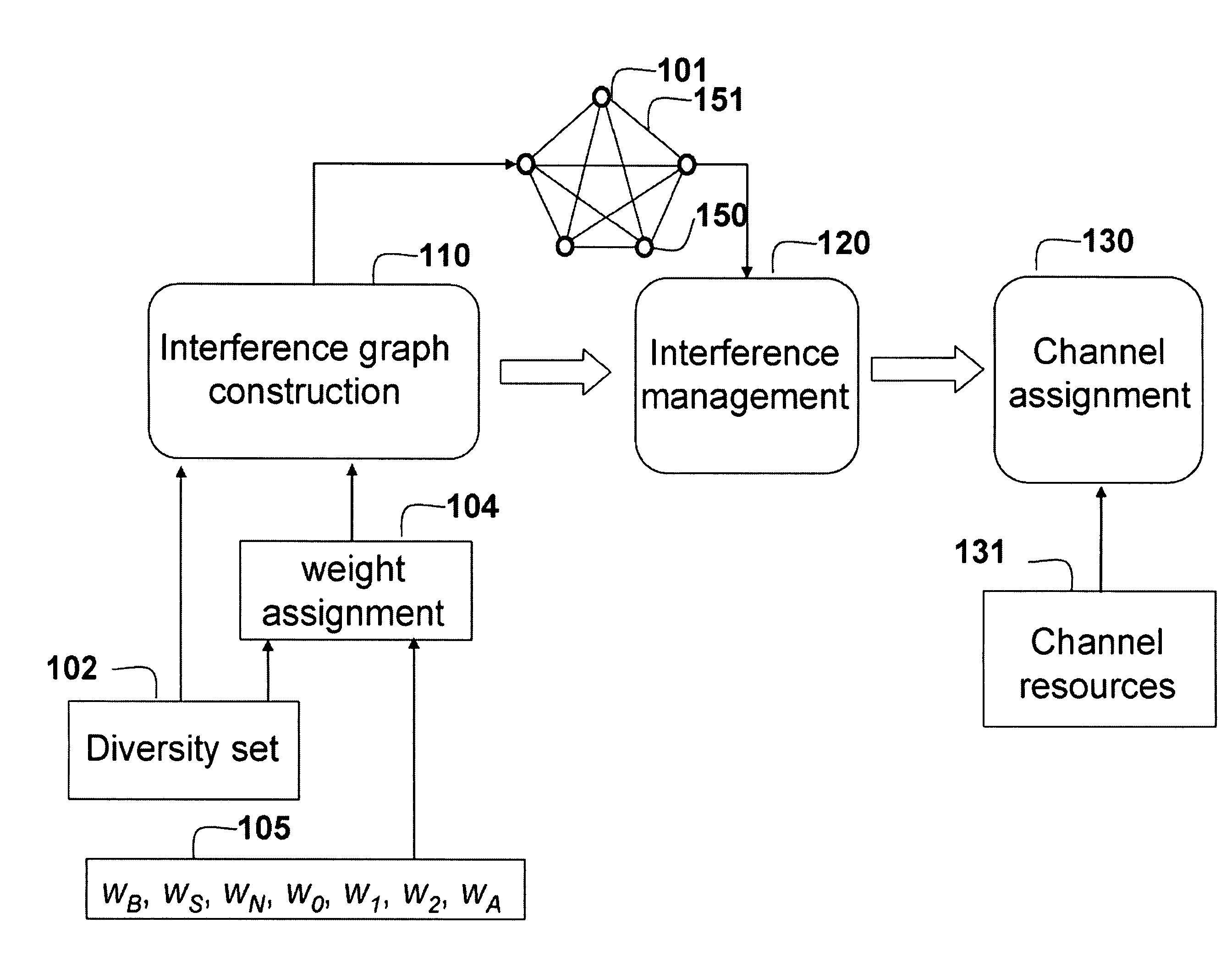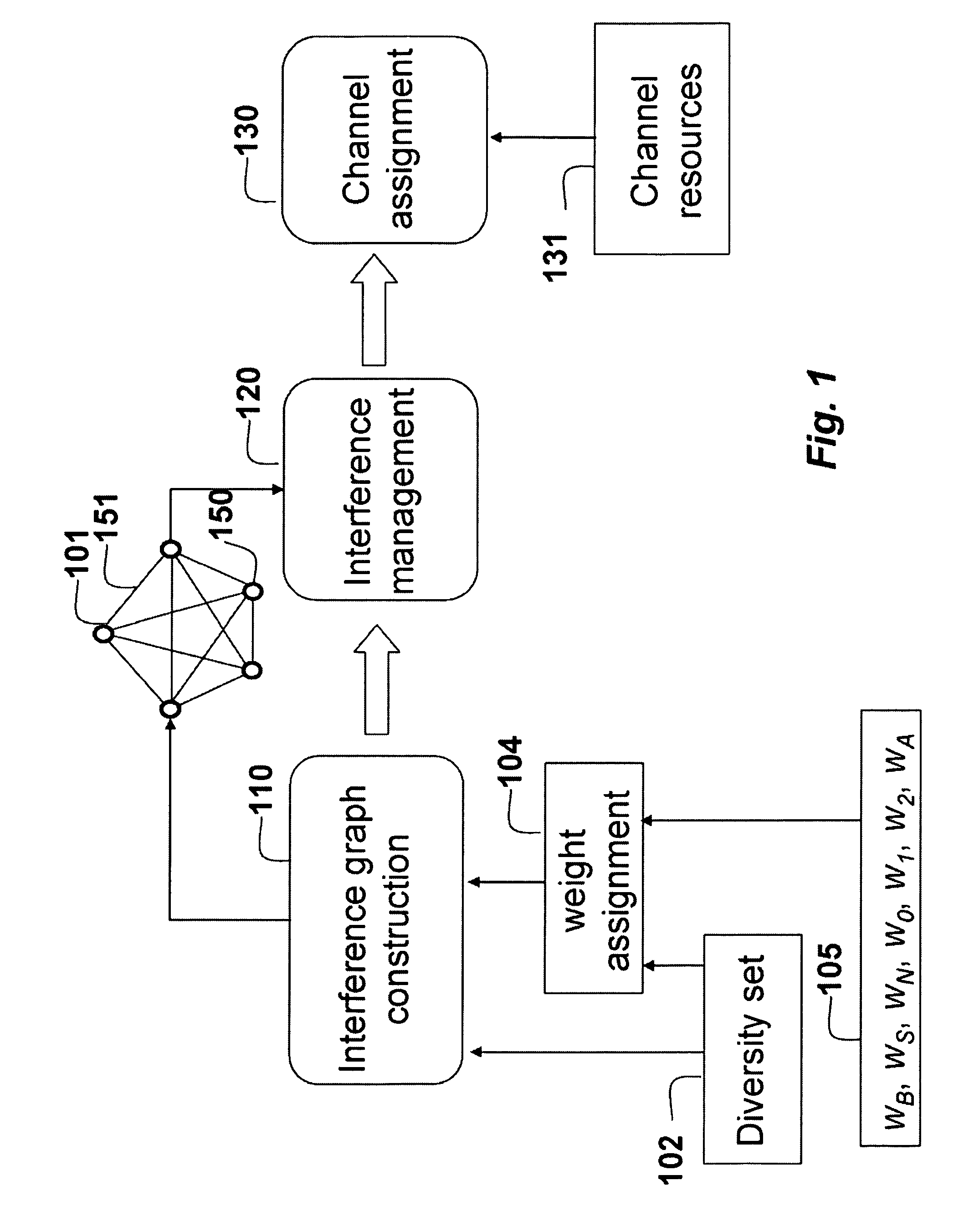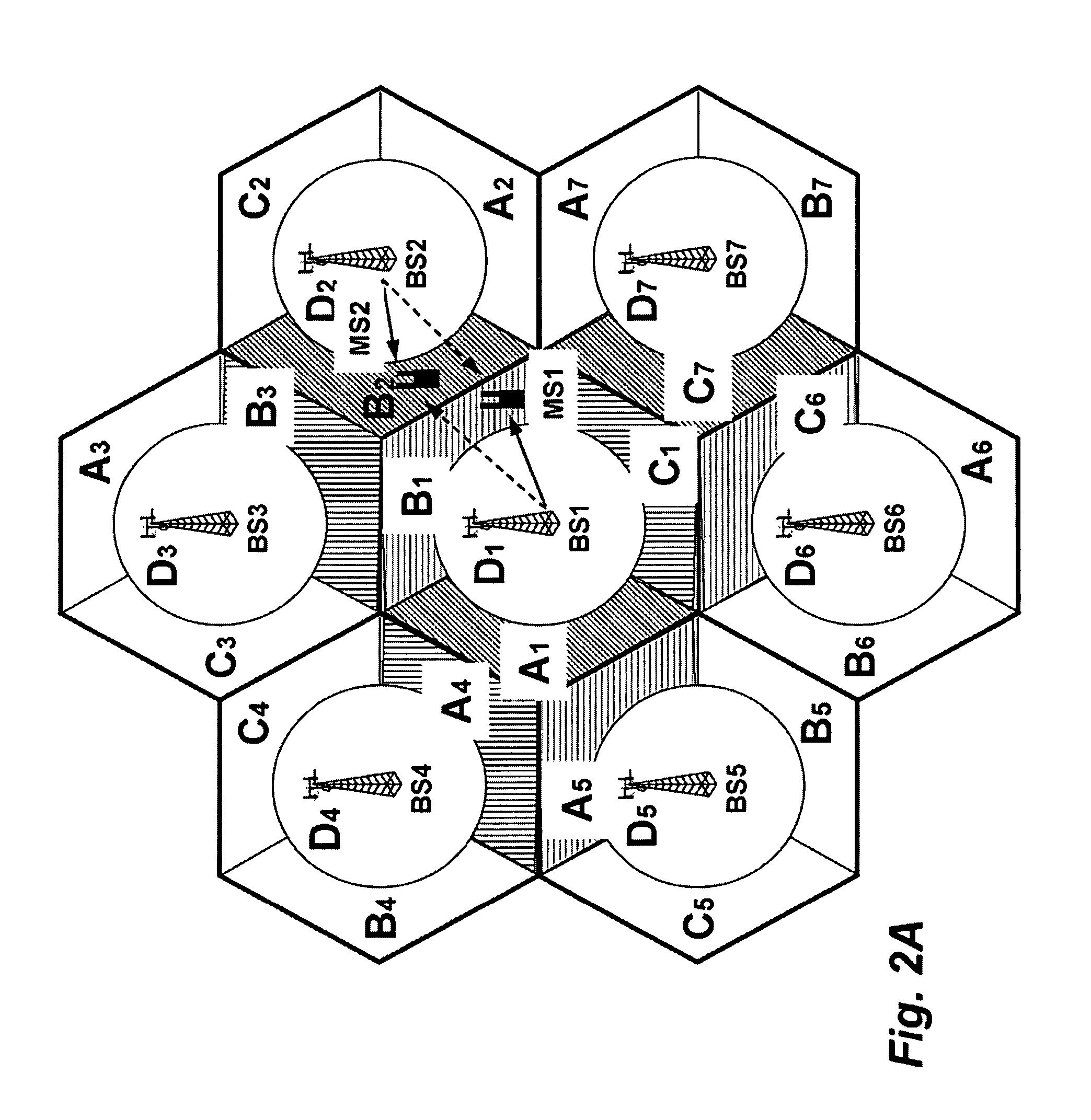Graph-Based Method for Allocating Resources in OFDMA Networks
a graph-based, orthogonal frequency division multiple access technology, applied in the direction of frequency-division multiplex, amplitude demodulation, line-fault/interference reduction, etc., can solve the problem of inequality between the scarce spectrum that is available, ici is the predominant performance-limiting factor of wireless cellular networks, and inevitably incurs inter-cell interference (ici)
- Summary
- Abstract
- Description
- Claims
- Application Information
AI Technical Summary
Benefits of technology
Problems solved by technology
Method used
Image
Examples
Embodiment Construction
[0042]Graph-based OFDMA Resource Allocation
[0043]FIG. 1 shows a method for allocating resources to mobile stations in an orthogonal frequency-division multiplexing (OFDM) network according to embodiments of the invention. The OFDMA network includes multiple base stations (BSs) and multiple mobile stations (MSs).
[0044]We construct 110 an interference graph 101. In the graph, nodes 150 represent the MSs, and edges 151 connecting the nodes represent potential interference between the mobile stations represented by the nodes connected by the edges, as well as a quality of the channels used by the mobile stations.
[0045]The interference graph is constructed using diversity sets 102 maintained by the BSs and the MSs in the OFDMA network. Each BS can maintain a diversity set for the set of MSs and has knowledge of all diversity sets served by the BS. The BSs can exchange the diversity sets so that all BSs have all diversity sets, and the MSs can maintain diversity sets for the base stations...
PUM
 Login to View More
Login to View More Abstract
Description
Claims
Application Information
 Login to View More
Login to View More - R&D
- Intellectual Property
- Life Sciences
- Materials
- Tech Scout
- Unparalleled Data Quality
- Higher Quality Content
- 60% Fewer Hallucinations
Browse by: Latest US Patents, China's latest patents, Technical Efficacy Thesaurus, Application Domain, Technology Topic, Popular Technical Reports.
© 2025 PatSnap. All rights reserved.Legal|Privacy policy|Modern Slavery Act Transparency Statement|Sitemap|About US| Contact US: help@patsnap.com



